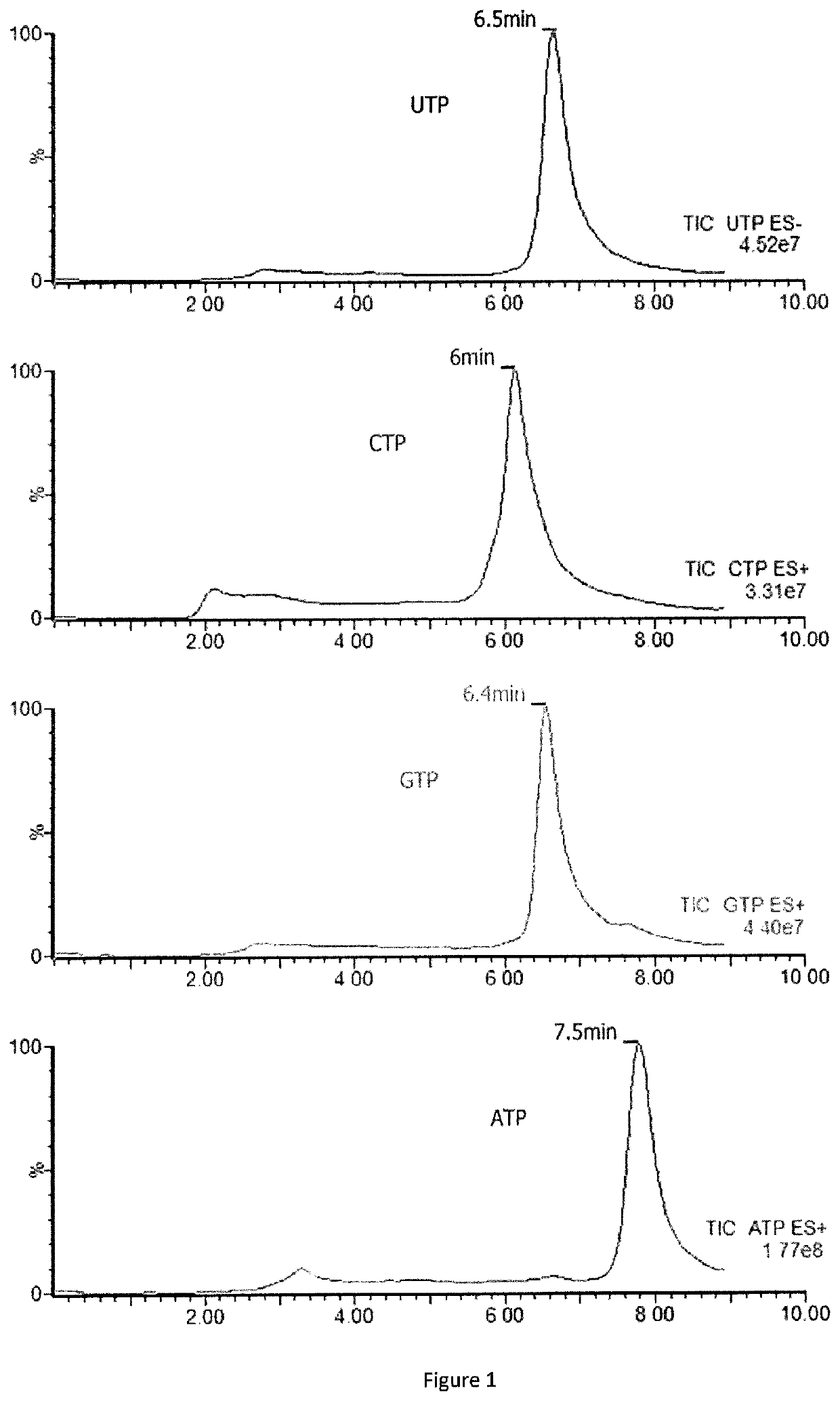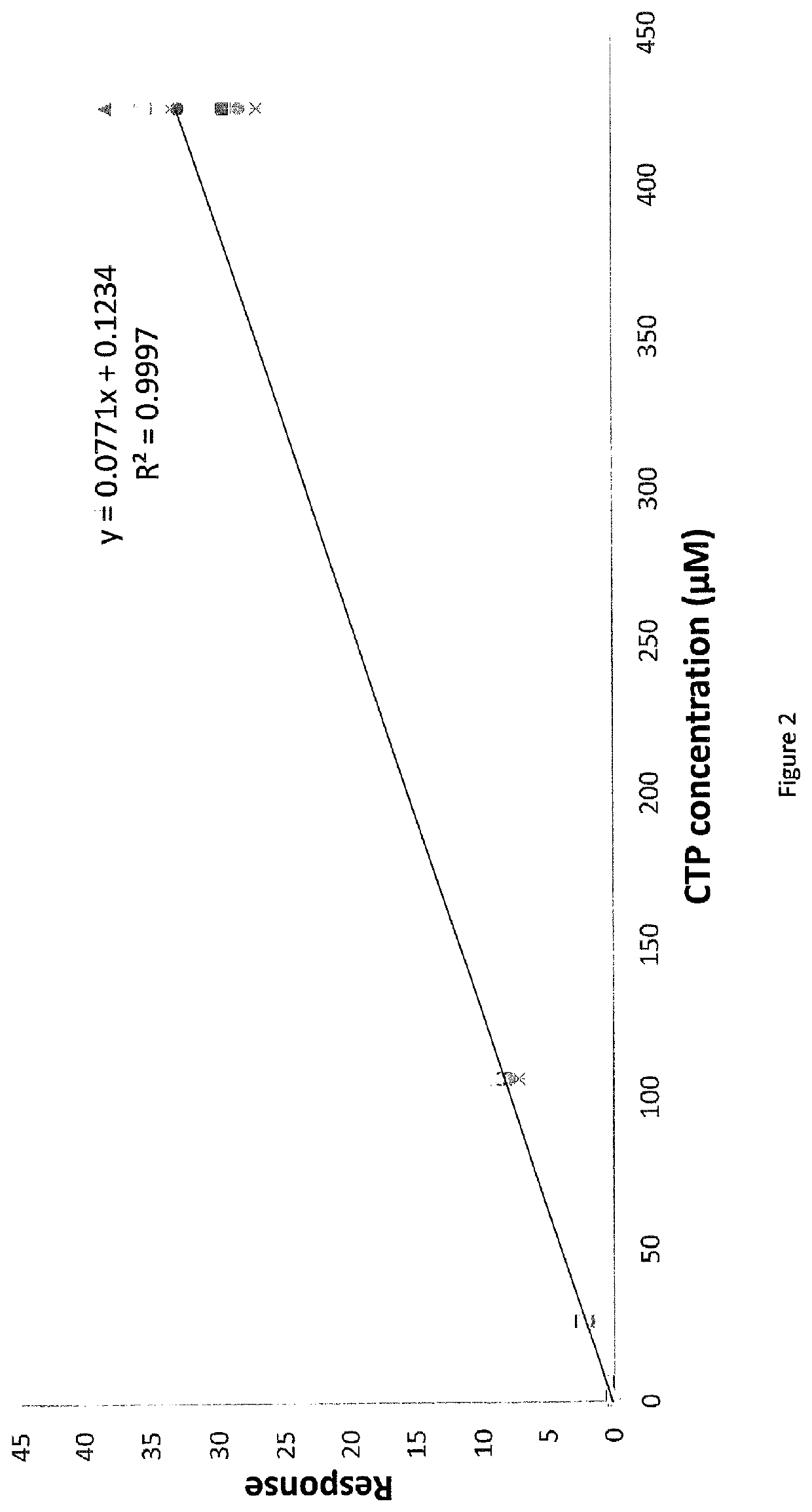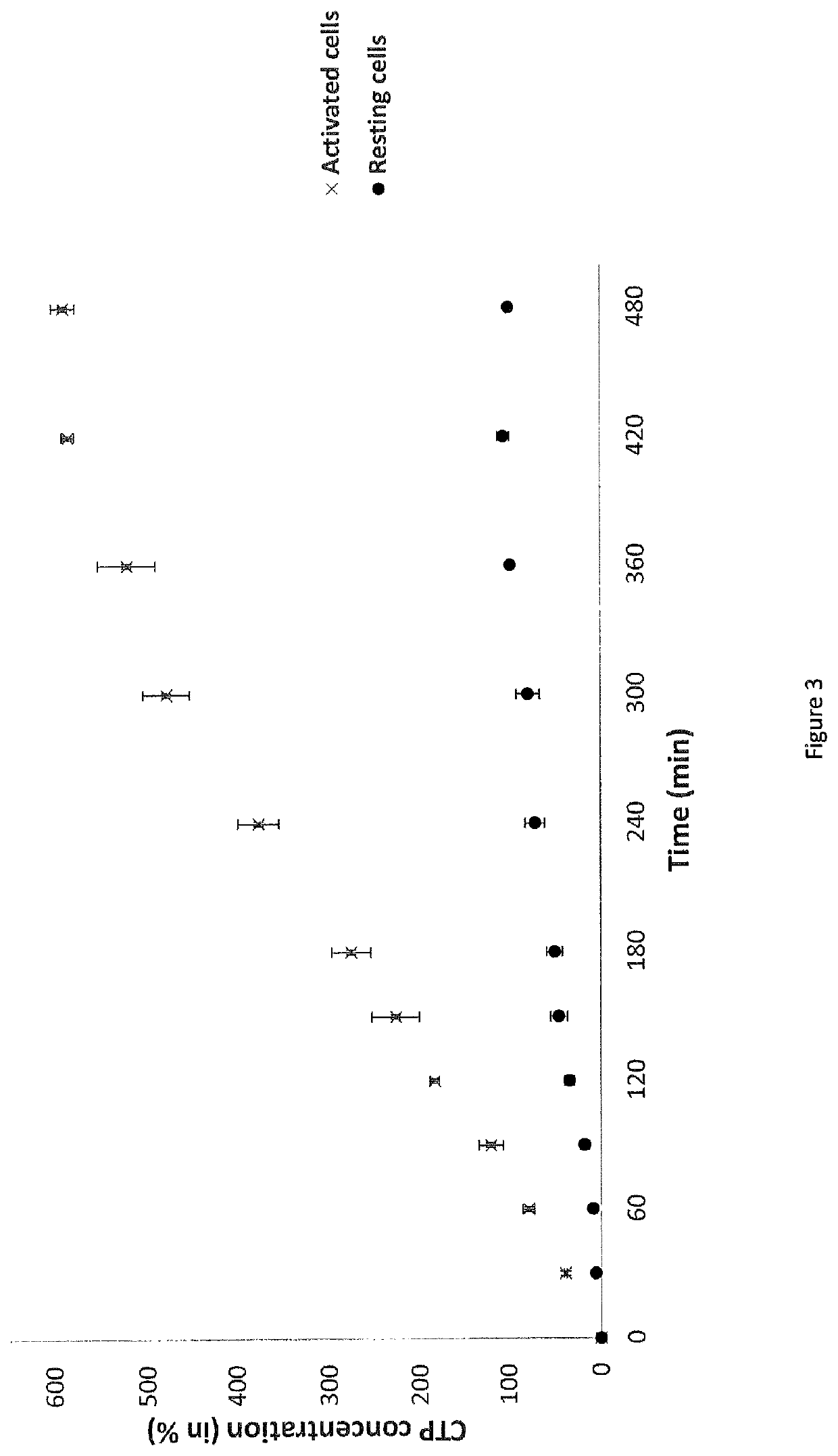Methods for detecting or quantifying CTP and CTP synthase activity
a synthase activity and ctp technology, applied in the field of triphosphate nucleotide detection and quantification, can solve the problems of high intravariability and intervariability, difficult and time-consuming to adapt and combine these technologies, and cannot overcome the drawbacks of prior art methods, etc., to achieve the effect of detecting and quantifying ctp and/or ctp synthase activity in short time and high specificity
- Summary
- Abstract
- Description
- Claims
- Application Information
AI Technical Summary
Benefits of technology
Problems solved by technology
Method used
Image
Examples
example 1
Materials and Methods
Preparation of Cell Extracts
[0183]The cell extracts may be obtained from cultured cells (primary cultures of cells, blasts or cell lines), from blood derived cells. Particularly, mononuclear cells (PBMCs, peripheral blood mononuclear cells) have been isolated from peripheral blood. The cells were washed with phosphate buffer 0.1 M KH2PO4, pH=7.4, and then collected in HEPES buffer 70 mM, pH=8.0, containing 10 mM NaF and protease inhibitors leupeptin and pepstatin to the concentration of 10 μg / mL. The cells were immediately placed in a bath of ethanol and dry ice, and then placed for at least 1 hour at −80° C. The cells were then centrifuged for 30 minutes at 10 000 g at 4° C. The supernatant, containing the cytosolic fraction, was collected and contained proteins were dosed.
Preparation of Reagents
[0184]CTP stock solutions and internal standard (stable isotope CTP) were prepared at a concentration of 1 mM and 200 μM, respectively, in Hepes 70 mM and stored at −40...
PUM
| Property | Measurement | Unit |
|---|---|---|
| diameter | aaaaa | aaaaa |
| diameter | aaaaa | aaaaa |
| diameter | aaaaa | aaaaa |
Abstract
Description
Claims
Application Information
 Login to View More
Login to View More - R&D
- Intellectual Property
- Life Sciences
- Materials
- Tech Scout
- Unparalleled Data Quality
- Higher Quality Content
- 60% Fewer Hallucinations
Browse by: Latest US Patents, China's latest patents, Technical Efficacy Thesaurus, Application Domain, Technology Topic, Popular Technical Reports.
© 2025 PatSnap. All rights reserved.Legal|Privacy policy|Modern Slavery Act Transparency Statement|Sitemap|About US| Contact US: help@patsnap.com



